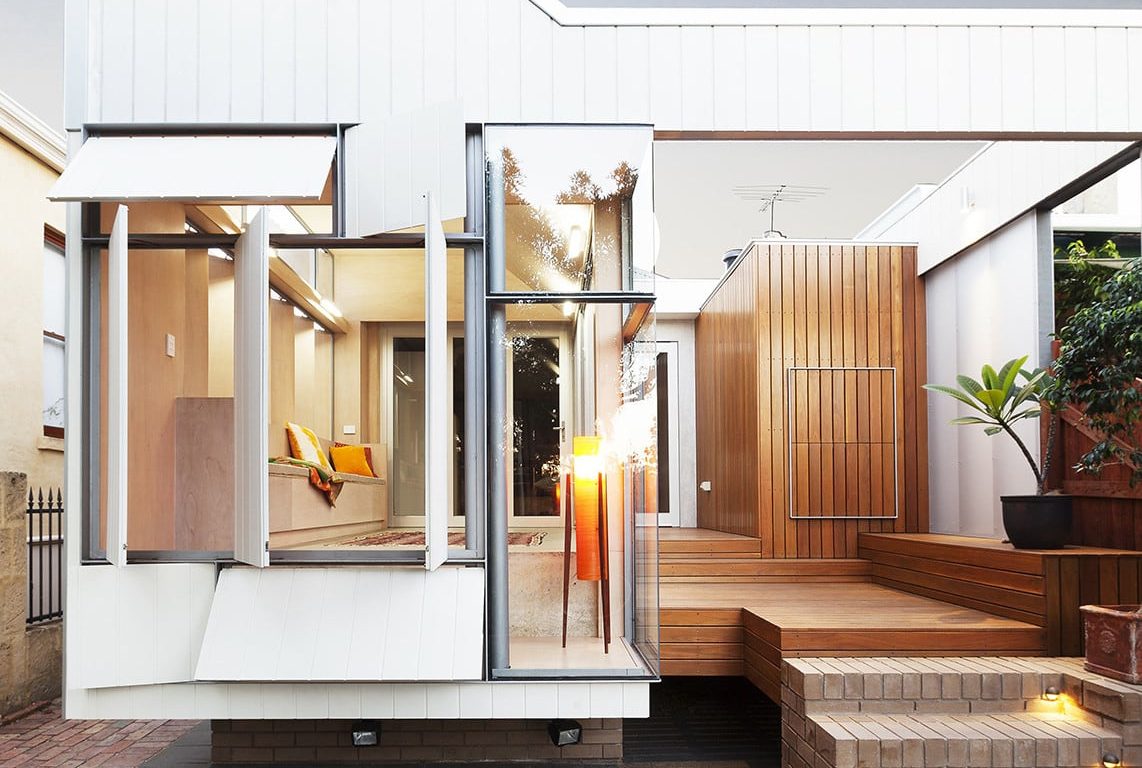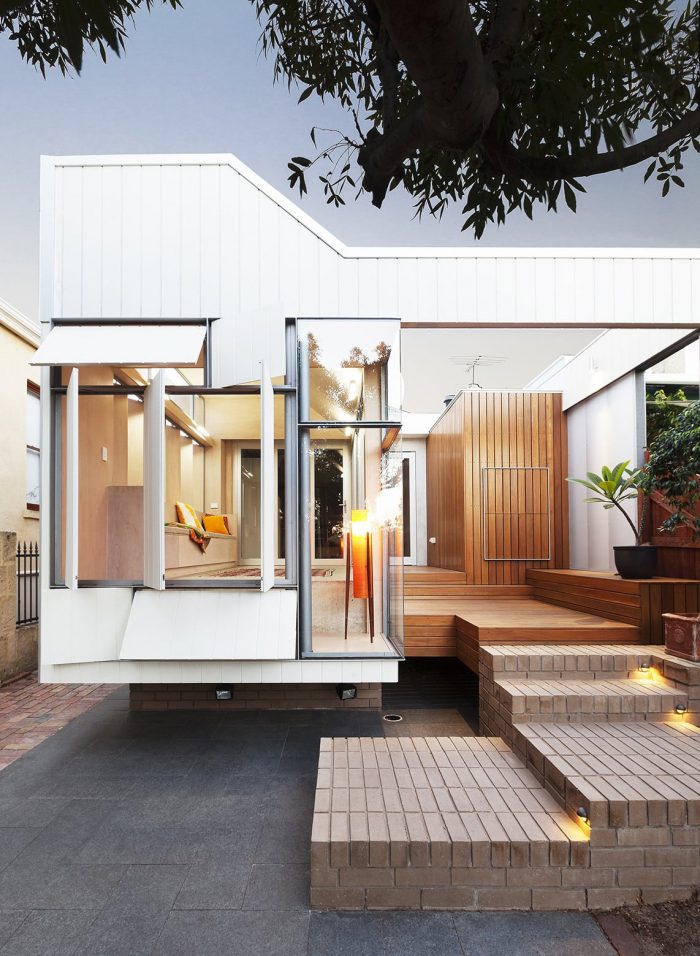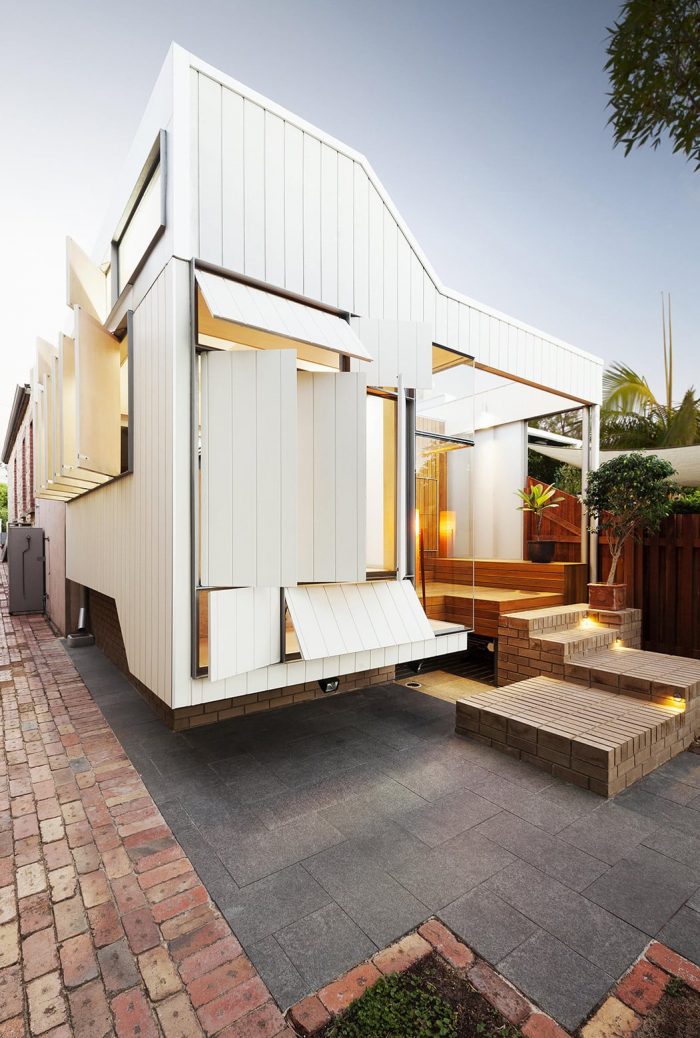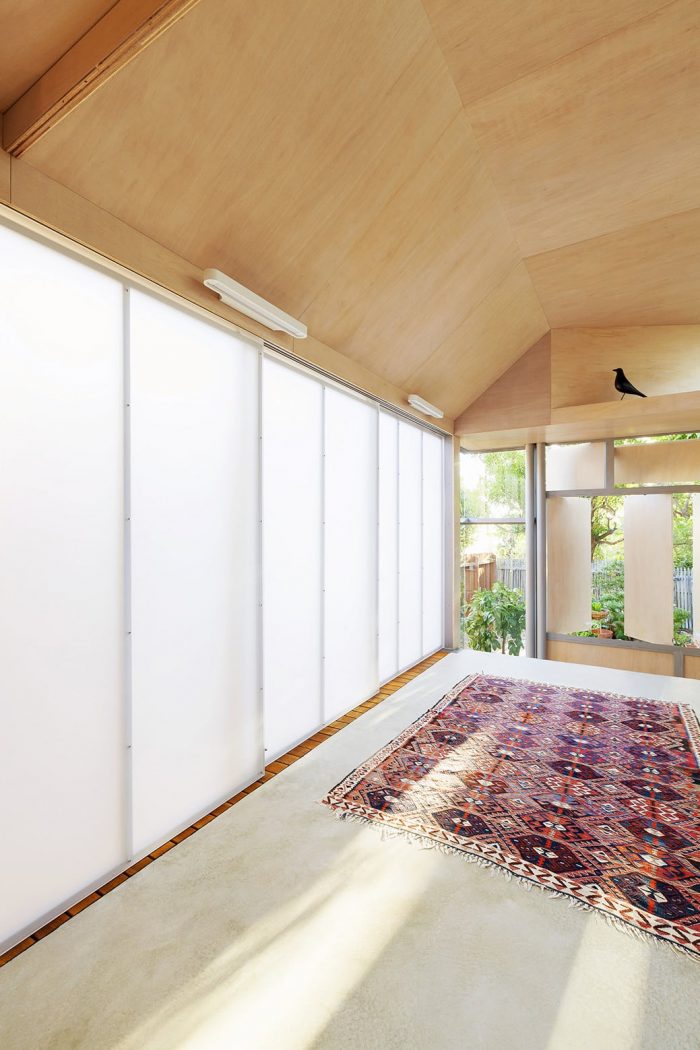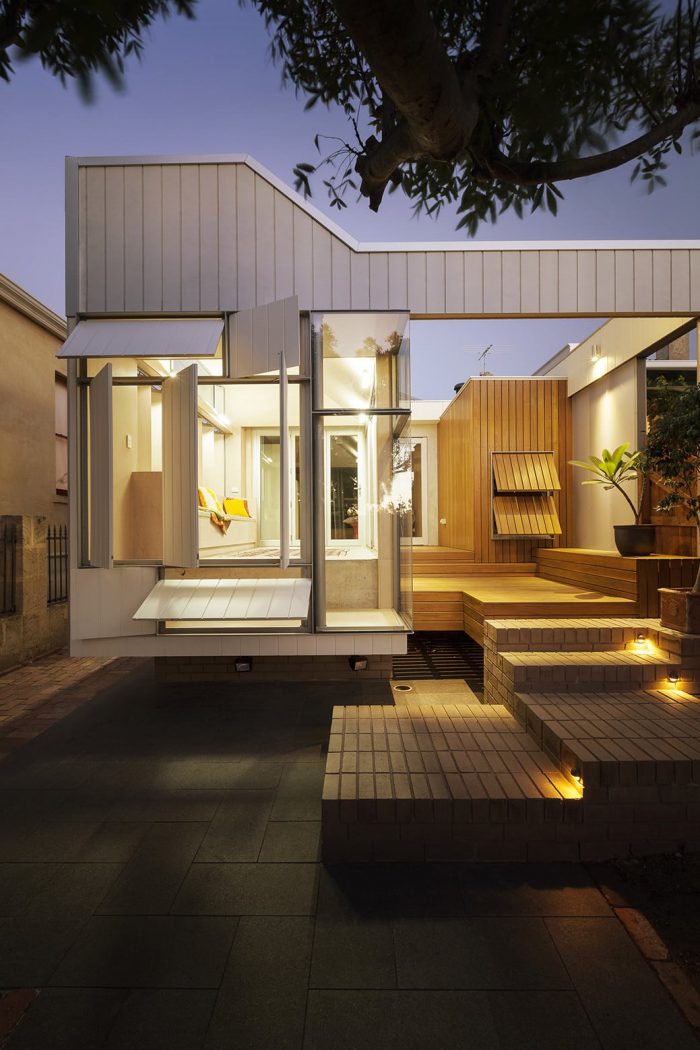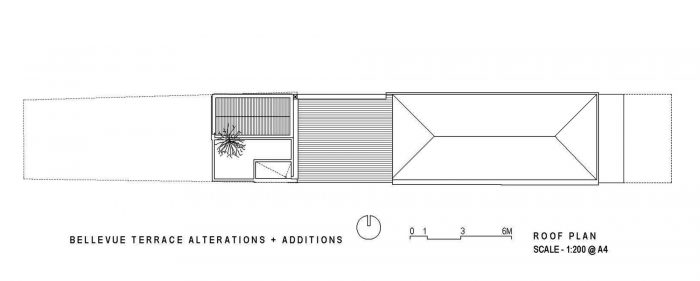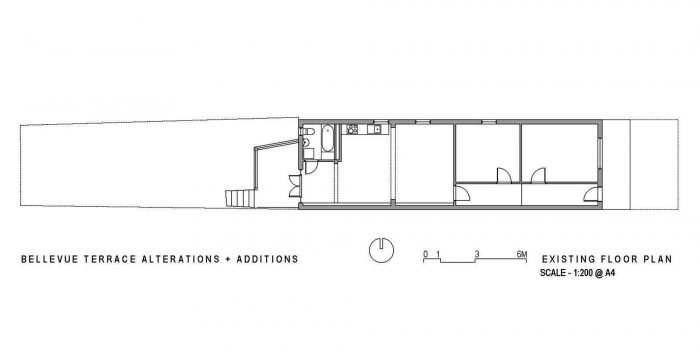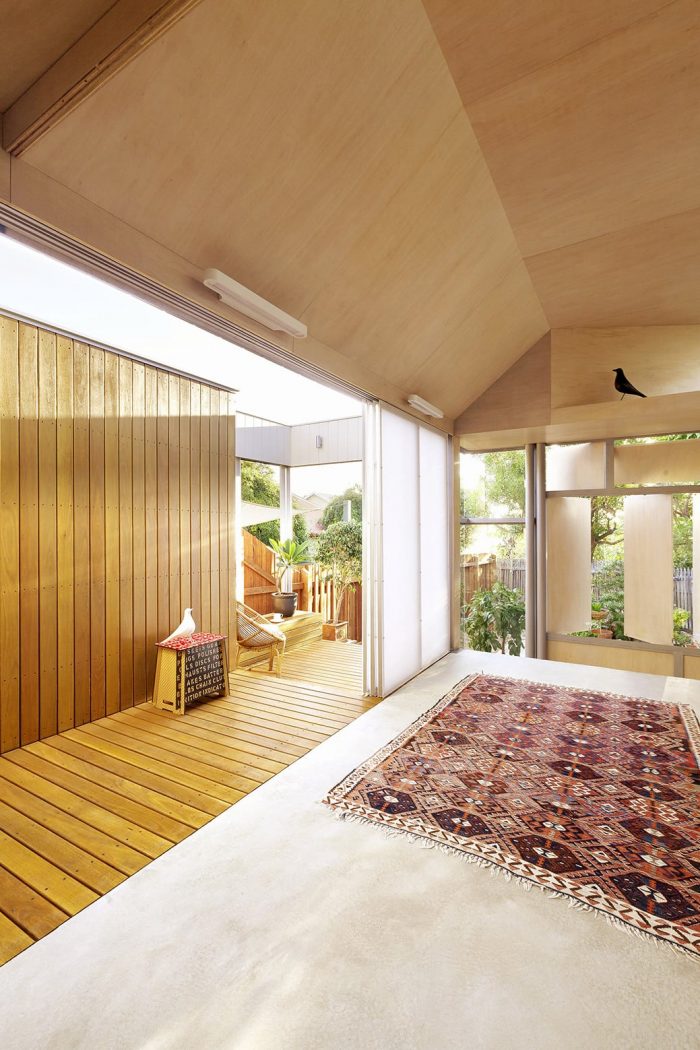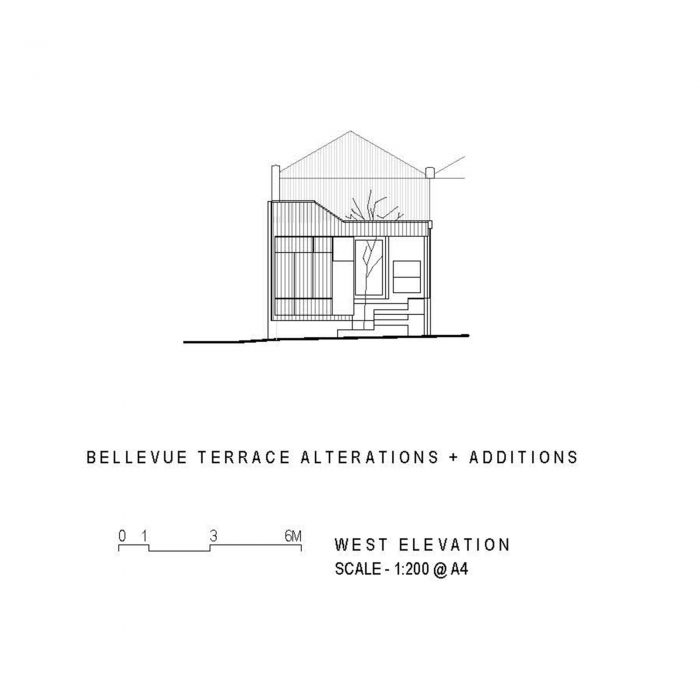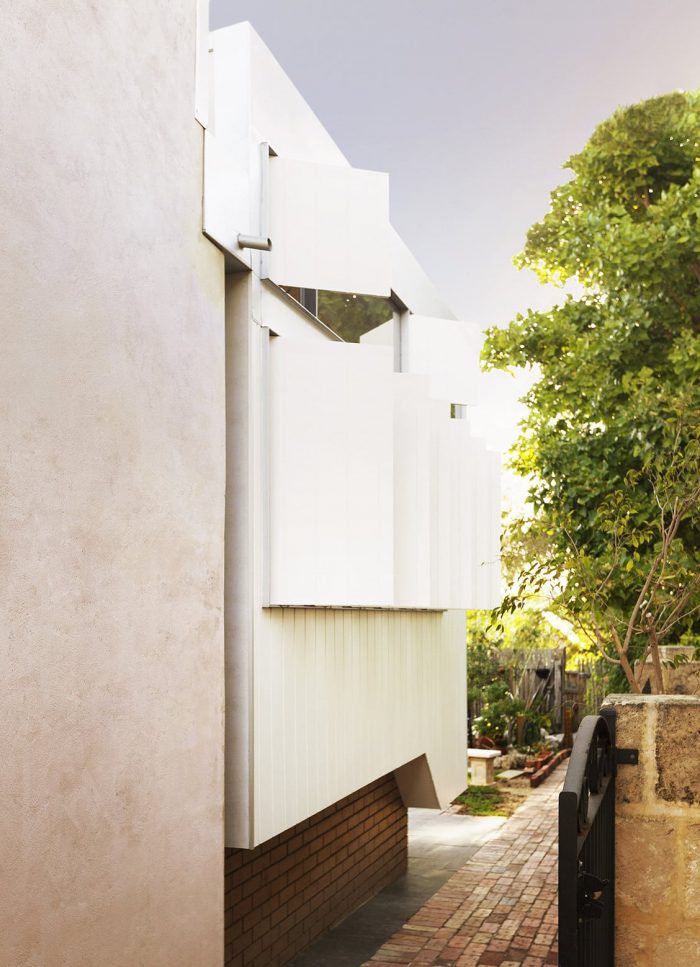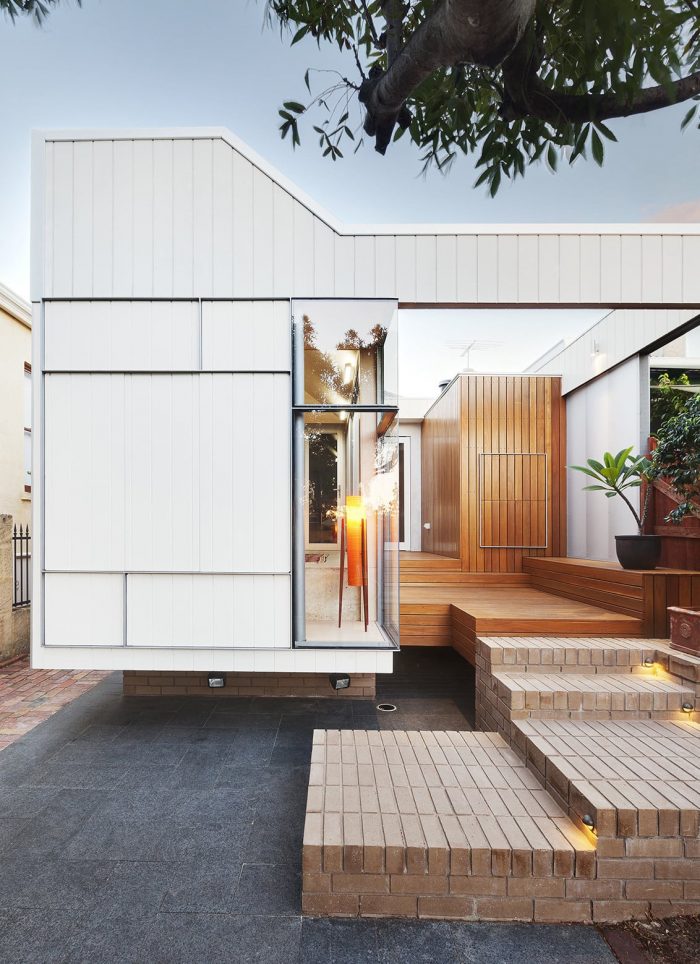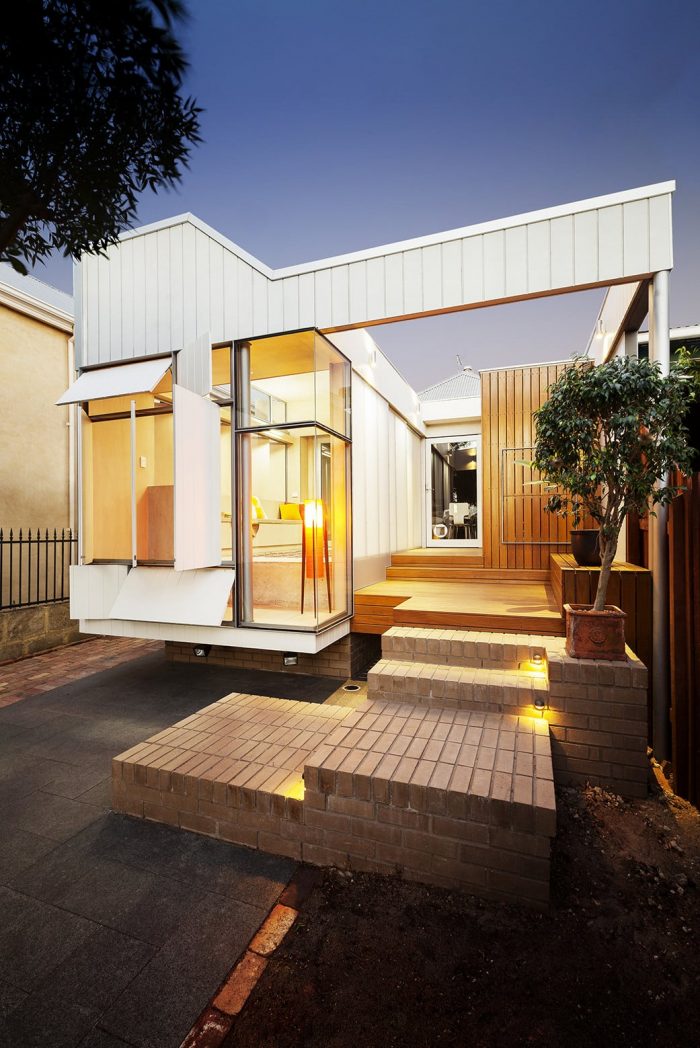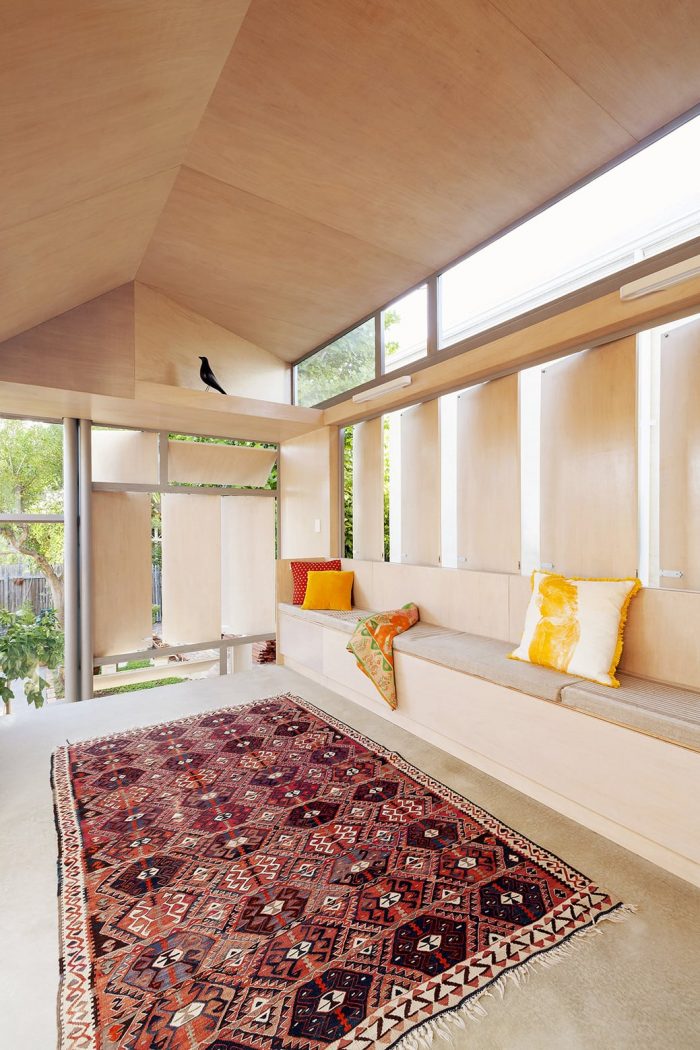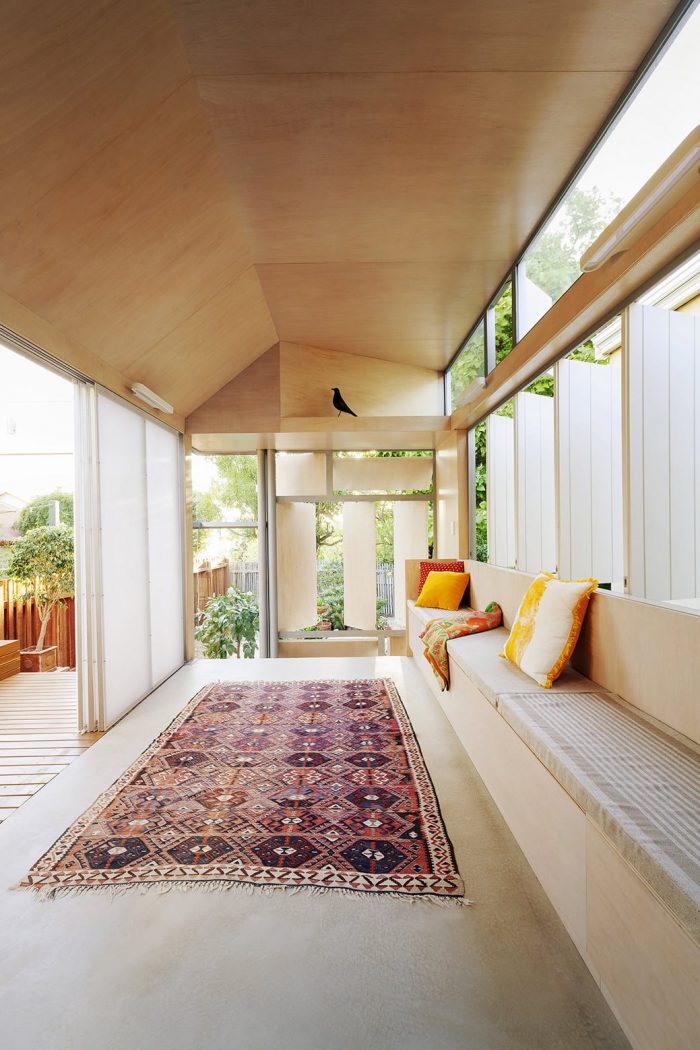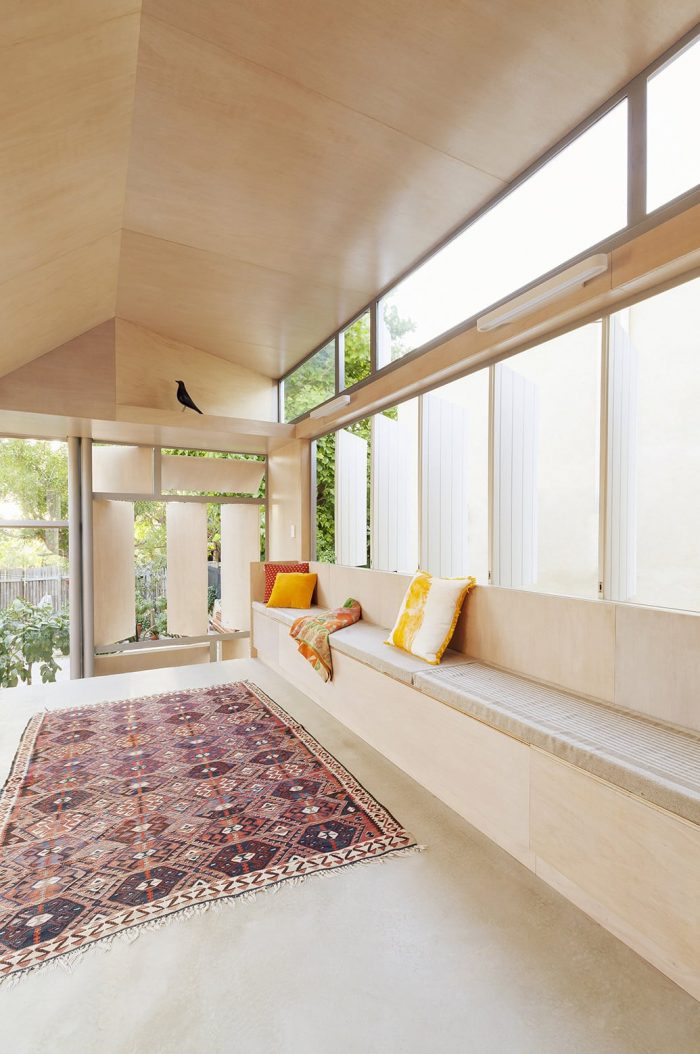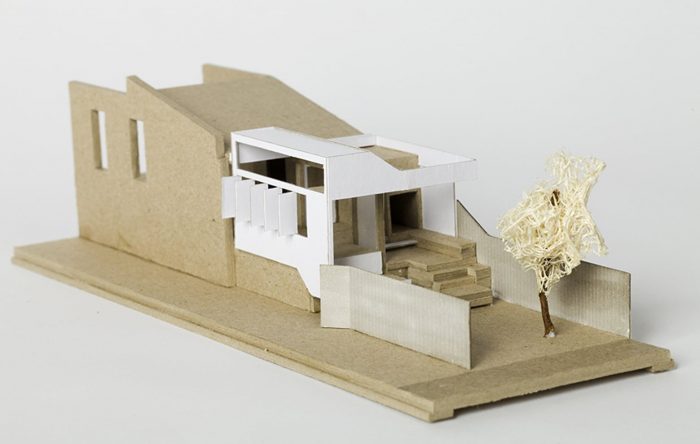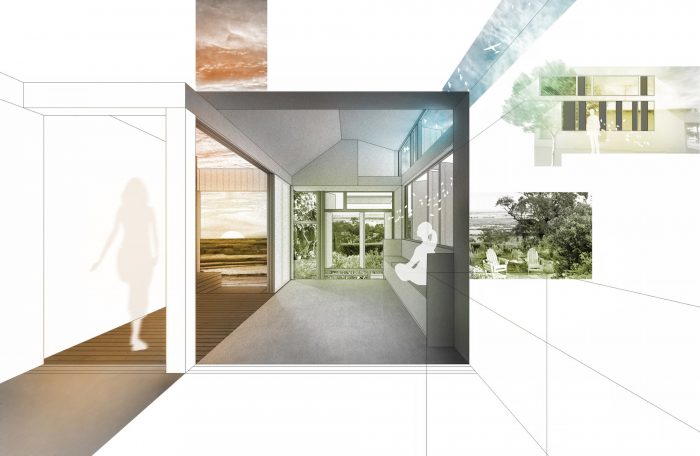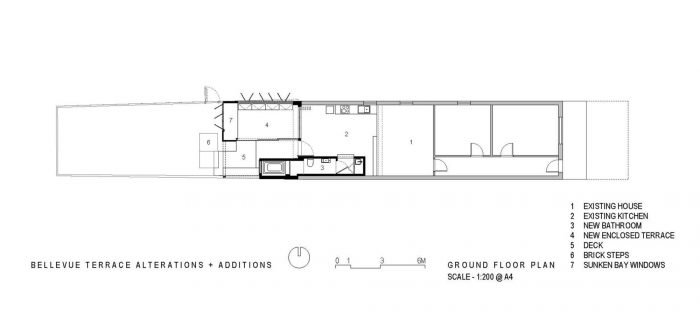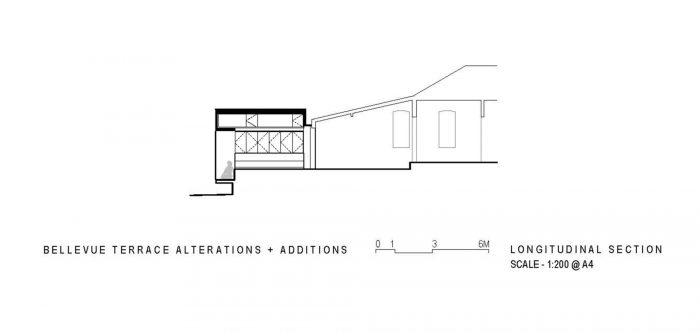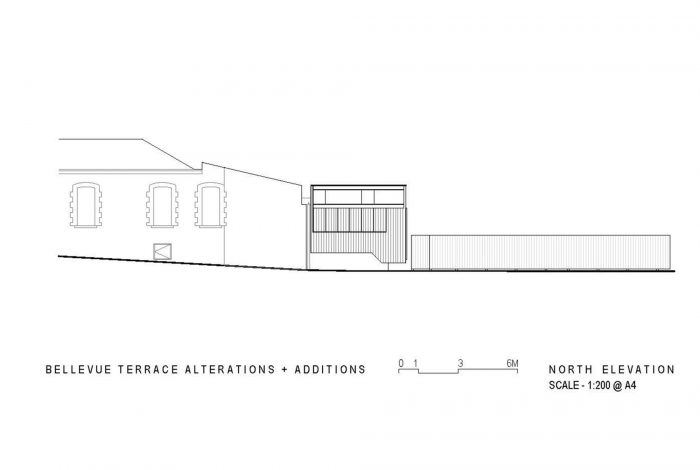我们的项目包括对一个现有的1890年代的复式建筑进行改建和增建,该复式建筑与花园之间有1.5米的水平差,并且有一个位置不方便的卫生间。我们的任务是与外部建立一种新的关系,用一个既不完全是内部也不完全是外部的灵活空间取代现有的露台和凉棚。
Our project comprises alterations and additions to an existing 1890’s duplex disconnected from its garden by a 1.5m level difference and an inconveniently placed bathroom. The brief was to forge a new relationship with the outside, and to replace an existing deck and pergola with a flexible space that was neither fully internal nor external.
我们的回应是编排一个条件系列,为我们的客户提供不同程度的 “接近 “外部的机会,让他们在与环境互动的方式上有高度的选择。
Our response was to choreograph a family of conditions that offers our clients varying degrees of ‘nearness’ to the outside, allowing them to exercise a high level of choice in the way they interact with their environment.
在空间上,我们的项目可以粗略地分为以下几个区域。
一个户外餐厅,一个狭窄的浴室和一条中间的通道。
Spatially, our project can be loosely ordered into the following areas:
an outdoor dining room, a narrow bathroom and a pathway between.
根据介绍,这两个空间都不完全是室内或室外。根据百叶窗、推拉板和折叠墙的配置,这些空间在这些定义和相互之间移动。
As briefed, neither space is completely interior or exterior. Depending on the configuration of shutters, sliding panels and folding walls, the spaces move between these definitions and each other.
这些可操作的表面允许业主个性化他们的环境,并享受空间的灵活性,这使得适度的空间感觉更大,满足不同形式的居住。
These operable surfaces permit the owners to personalize their environment and enjoy a spatial flexibility, which makes the modest spaces feel larger and cater to varying forms of habitation.
业主与他们的住所互动的能力(和要求)是项目的核心。我们与客户合作,探索一种互动的居住形式,使他们能够根据气候、社会或其他条件来协调不同程度的隐私、内部性、热舒适度、功能等。
The ability (and requirement) for the owners to interact with their shelter is central to the project. We worked with our clients to explore an interactive form of habitation that allows them to orchestrate varying levels of privacy, interiority, thermal comfort, functionality, etc in response to climatic, social or other conditions.
每一个新的配置都提供了一个新的细微差别,并有可能在熟悉的节奏中继续提供惊喜,这些节奏是在重复的季节和一天的时间中采用的。
Each new configuration offers a fresh nuance with the possibility that the addition may continue to offer surprise alongside the familiar rhythms that are adopted in response to repeating seasons and times of day.
房子和花园之间的通道被拉出来,变得模糊不清。以前的台阶被一系列砖和木材的露台所取代,这些露台在户外餐厅和新浴室之间蜿蜒。业主有各种机会沿途闲逛,坐在平台和台阶的边缘……选择他们接近外部的条件–或内部。
Passage between the house and garden is drawn out and made indistinct. The former flight of steps is replaced with a series of terraces in brick and timber that wind between the outdoor dining room and the new bathroom. The owners are given various opportunities to loiter along the way, to sit on edges of platforms and steps… to choose their condition of nearness to the outside – or inside.
该项目赢得了2014年澳大利亚国家建筑师协会的住宅建筑奖。
The project won the 2014 National Australian Institute of Architects Award for Residential Architecture.
Architects: Philip Stejskal Architecture
Year : 2014
Photographs :Bo Wong
Manufacturers : Weathertex
City:FREMANTLE
Country:Australia

